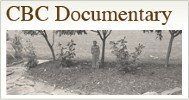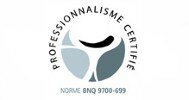Protection Plans
Responsibility: The Curateur public du Québec
Persons who have not provided for a mandate in case of incapacity and are unable to take care of themselves and their property may be protected by one of the three plans offered by the Curateur public.
The three types of protection
- tutorship of full age
- curatorship of the person and property
- the advisor to the person of full age
The protection of incapable persons is ensured by one of the three protective regimes, i.e. tutorship, curatorship and adviser of full age, which best meets the needs of the person, given the nature and degree of his or her incapacity.
The final decision as to which of these regimes to choose is made by the court (Superior Court) to which the application for protective supervision is referred, taking into consideration the medical and psychosocial assessments as well as the opinions of the person of full age and the persons likely to form the tutorship council.
TUTORSHIP OF A PERSON OF FULL AGE
Guardianship of persons of full age aims to protect adults who are partially or temporarily incapacitated.
Tutorship concerns either the person and property, the person only or the property only. Thus we find :
- guardianship of property limited to the simple administration of property, which can also be assumed by a legal person (e.g., a trust company)
- guardianship of the person limited to decisions concerning the physical person (medical treatment, surgery, accommodation and general welfare of the person) which can only be assumed by a physical person
- combined guardianship of property and person.
GUARDIANSHIP OF THE PERSON AND PROPERTY
This is the most comprehensive protective regime and is limited to the most serious situations. It applies to people who are judged to be totally and permanently incapacitated.
Curatorship can be assumed by two curators, one for the person (physical person) and the other for property (legal person).
The private or public curator is the legal representative of the adult to be protected. For example, it is up to the curator to approve medical treatment or surgery when the person is deemed unfit to do so. However, the difference in responsibilities between the private and public curators is as follows
- the private curator has full administration of the property entrusted to him or her
- the public curator has the simple administration of the property of the protected person.
ADVISOR TO THE PERSON OF FULL AGE
This protective regime is instituted when a person is generally capable of administering his or her own affairs, property and taking care of himself or herself, but who, for certain acts or temporarily, needs help or advice (e.g.: purchase or sale of real estate, investments, etc.).
This plan can only be assumed by a family member or someone close to the person in question. The counsellor will assist the person as needed, but will not act on the person's behalf.
REGISTER OF PROTECTIVE SUPERVISION
The Public Trustee maintains a register of guardianships and curatorships of full age.












